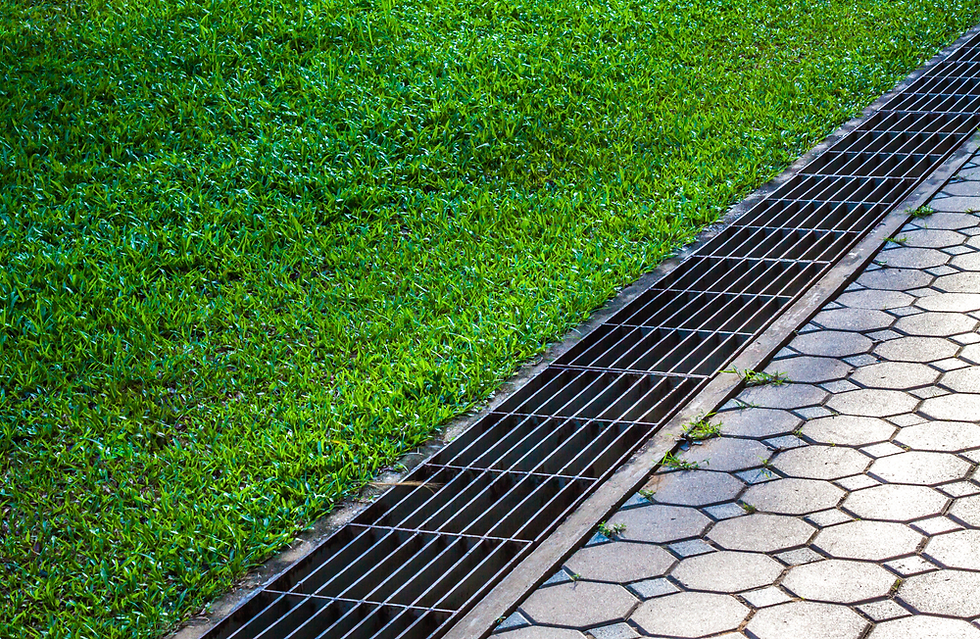How-To Unblock Your Drains Efficiently
- Emma Smith
- Jun 11
- 3 min read
Updated: Nov 6

A blocked drain is a common household problem that can lead to unpleasant odors, slow drainage, and even potential water damage if left untreated. Whether it's a clogged kitchen sink, a slow-draining bathtub, or a backed-up shower, knowing how to unblock your drains efficiently can save you time, money, and frustration. In this guide, we’ll explore various methods to tackle drain blockages, from simple DIY solutions to more advanced techniques.
Understanding the Causes of Blocked Drains
Before attempting to unblock a drain, it’s essential to understand what might be causing the obstruction. Common culprits include:
Hair and Soap Scum: In bathroom drains, hair combines with soap residue, forming a sticky clog.
Food Waste and Grease: Kitchen sinks often get blocked due to food particles, oil, and grease buildup.
Foreign Objects: Small items like toys, jewelry, or sanitary products can accidentally fall into drains.
Mineral Buildup: Hard water deposits can accumulate over time, narrowing pipes and reducing water flow.
Tree Roots: In outdoor drains, tree roots can infiltrate pipes, causing severe blockages.
Simple DIY Methods to Unblock Drains
1. Boiling Water: One of the easiest ways to clear minor blockages is by pouring boiling water down the drain. This method works well for grease or soap buildup. Simply boil a kettle of water and carefully pour it directly into the drain in two or three stages, allowing hot water to work between pours.
2. Baking Soda and Vinegar: A natural and chemical-free solution involves using baking soda and white vinegar. Start by pouring half a cup of baking soda into the drain, followed by an equal amount of vinegar. The mixture will fizz and help break down debris. After 15-20 minutes, flush the drain with hot water to clear the loosened blockage.
3. Plunger: A plunger is a highly effective tool for dislodging clogs. Ensure there’s enough water to cover the plunger’s rubber cup, then create a tight seal over the drain. Push and pull vigorously for about 20-30 seconds. The suction force should help remove the obstruction.
4. Manual Removal: If the blockage is near the surface, you may be able to remove it manually. For bathroom sinks or showers, remove the drain cover and use a bent wire hook or tweezers to pull out hair and debris.
Advanced Drain Unblocking Techniques
If simple methods don’t work, you may need to try more advanced techniques.
1. Drain Snake (Auger): A drain snake is a flexible tool designed to reach deep into pipes and break up stubborn clogs. Insert the snake into the drain and rotate it while pushing forward. Once you feel resistance, twist and pull to extract the blockage.
2. Wet/Dry Vacuum: If you have a wet/dry vacuum, you can use it to suck out the clog. Set the vacuum to liquid mode, create a tight seal around the drain, and turn it on. The suction should pull out the obstruction.
3. Chemical Drain Cleaners (Use with Caution): Commercial drain cleaners can dissolve tough clogs, but they contain harsh chemicals that may damage pipes over time. If you use them, follow the instructions carefully and wear protective gloves. Avoid mixing different chemicals, as this can create dangerous fumes.

Preventing Future Drain Blockages
Prevention is always better than cure. Here are some tips to keep your drains flowing smoothly:
Use Drain Guards: Place mesh screens over drains to catch hair, food particles, and other debris.
Avoid Pouring Grease Down the Sink: Instead of disposing of cooking oil in the drain, let it solidify and throw it in the trash.
Flush Drains Regularly: Pour hot water down drains weekly to prevent buildup.
Be Mindful of What Goes Down the Drain: Avoid flushing non-degradable items like wipes, cotton balls, or dental floss.
When to Call a Professional Plumber
While many blockages can be resolved with DIY methods, some situations require professional help. Call a plumber if:
The clog persists despite multiple attempts.
There are foul odors or gurgling sounds from drains.
Multiple drains are backing up simultaneously (indicating a sewer line issue).
You suspect tree root intrusion or pipe damage.
Conclusion
Unblocking a drain doesn’t always require expensive tools or professional assistance. By understanding the cause of the blockage and using the right techniques—such as boiling water, baking soda and vinegar, or a plunger—you can often resolve the issue yourself. For tougher clogs, a drain snake or wet/dry vacuum may be necessary. However, prevention is key; maintaining your blocked drains properly will reduce the likelihood of future blockages. If all else fails, don’t hesitate to call a licensed plumber to avoid further damage. With these tips, you can keep your drains running efficiently and your home free from plumbing headaches.




.png)





Comments